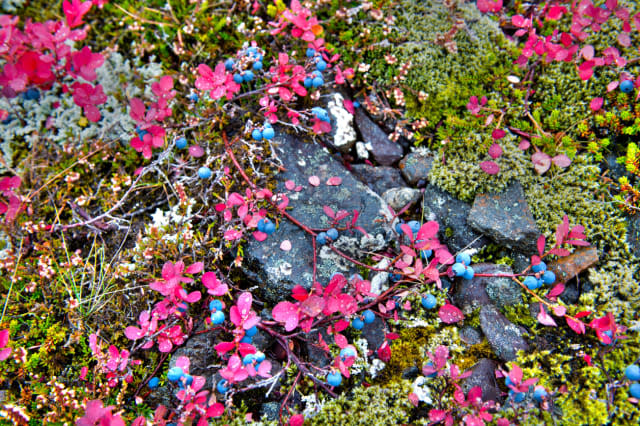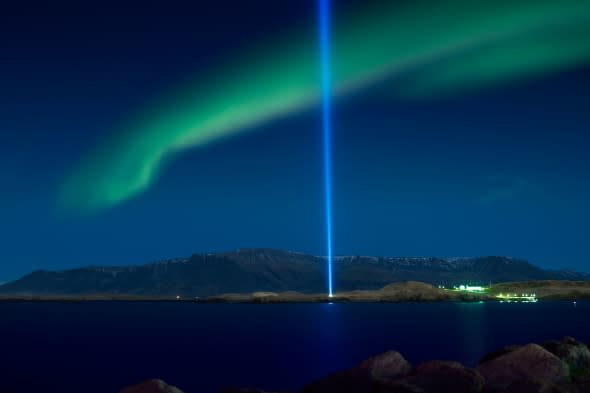The best time to visit Iceland? Why autumn is ideal

Iceland is a wonderful destination for a summer holiday - but it's a lesser-known fact that it can be even better in autumn. From mid-September onwards, car hire prices and hotel room rates fall and the crowds evaporate. So if it's space, freedom, fresh air and glorious scenery that you're after, this time of year is ideal.
See also: A holiday of a lifetime: Icelandair's exclusive lighthouse hotel for autumn
The slightly shorter day-length can be a limiting factor in terms of sightseeing (sunrise is at about 8am and sunset at 6.45pm in October and about 9am and 5.20pm in November) but this is more than made up for by the possibility of seeing the Northern Lights (for which you'll need a clear sky and some solar activity). The Icelandic Met Office's excellent website at www.vedur.is provides an aurora forecast and cloud cover information.

There are plenty of organised aurora tours from Reykjavik but effectively they're just taking you to locations where the light pollution from the city is lower - so you can do it yourself if you hire a car. However you choose to go, do wrap up warm as there can be a lot of standing around. You might be lucky and find you don't have to venture very far though: it's sometimes possible to see this spectacular display from your bedroom window. If you're staying in a hotel, ask the receptionist to wake you if the show starts after you've gone to bed - hotels are used to these requests so they won't bat an eyelid.
See also: Ten cool things to do in Iceland
And there's an added bonus if you're visiting Iceland in the autumn: you're in for a good night's sleep. The fact that it gets so dark and quiet at night - and for such a long stretch - can be a huge advantage to those who find it hard to sleep in daylight. Summer visitors often struggle to cope with the midnight sun that seeps into bedrooms and under doors (if you're going in summer, then take an eye mask!).

If you decide to take advantage of the lower car hire rates at this time of year, you'll have a far wider range of options for exploring the natural wonders and dramatic scenery than organised tours can offer. Jökulsárlón glacial lagoon (pictured, above) will more than reward the six-hour drive (stay overnight in Hofn or Vik to make more of an adventure of it) and there's plenty to see on the way along the island's south shore, including waterfalls, volcanoes, glaciers and black sand deserts.

The beautiful Skaftafell National Park (above) is also well worth a visit and can make for a great autumn hike (with some wild blueberry picking - look for the tiny pink leaves - on the way back). If you feel like going north, explore the volcanically active area around Lake Myvatn. This gem even has its own version of the Blue Lagoon, Myvatn Nature Baths, set high up on a hillside so that you can enjoy the views of the surrounding areas while you soak in the warm mineral-rich waters. If the weather turns frosty, the contrast between the soothing warm water and the outside temperature is a unique experience - not to be missed.

Autumn daytime temperatures average from 7C (45F) in September to 3C (37F) in November so you will need to bring plenty of warm clothes (a merino wool base layer is ideal). Windchill can make it feel even colder, and it's worth taking into account that these figures are for Reykjavik, so take off a couple of degrees for rural areas. It can be rainy, frosty and even snowy. Car tyres are often swapped over to studded ones for extra grip around the end of October. The very useful highways agency website (www.vegagerdin.is) can provide detailed information of the current state of the roads, including roadworks and closures. Bear in mind that the mountain tracks and unpaved roads through the middle of Iceland freeze during the winter and are normally only open during the summer months.

Autumn is also the season for sheep and horse roundups (réttir) when farmers hike up the remote valleys to gather all the animals back to the farms for winter. Family and friends travel out from cities and towns to help and tourists are welcome to join in, provided you're happy to take a few shouted directions. Ask in tourist offices for the latest information on dates and locations; as a rule the sheep roundups begin in mid-September and the horses are rounded up around three weeks later. Farmers sometimes have to go out a second time to fetch in the stragglers - especially if the weather's been warm and the grass is still good. Conversely, an early fall of snow can often persuade the animals to make their own way back to the farm.
If the weather's good, but you only have time for a day trip out of the city, there are several options. Why not try horseriding on a beautiful beach under a volcano? Lysuholl, a horse farm on the stunning Snaefellsnes peninsula, will match you up with one of Iceland's finest four-footed inhabitants for a breathtaking adventure. Brought to the island more than 1,000 years ago by the Viking settlers and bred for friendliness ever since, you'll find them surprisingly easy to ride, even if you're a beginner.
Or if you prefer to venture east from Reykjavik, how about seeing the autumn colours in Thingvellir National Park, home to the world's first parliament and where you can also see the huge and infamous crack in the rock that runs through the middle of Iceland.
If you're staying in Reykjavik and prefer not to drive, you can still get out of the city for the day. A jeep trip on to one of the glaciers would be an exhilarating adventure and the views can be magnificent. Or why not take a bus tour to see Gullfoss, one of Iceland's most beautiful waterfalls and Geysir, which shoots up a column of boiling water several metres into the air every few minutes.

Back in Reykjavik, there's also plenty to keep you occupied, including whale watching, a range of art and photography museums, lots of specialist shops, cafes, bars and an absolutely classic US-style burger joint with an Icelandic twist. Then there's the Airwaves festival, which runs from November 4-8 and gathers together musicians from all over the world for what Rolling Stone magazine called 'the hippest long weekend on the annual music-festival calendar.' The Imagine Peace Tower (pictured), an outdoor work of art, is visible an hour after sunset between 9 October and 8 December.
Whenever you get the chance, do as the Icelanders do and go and hang out at a natural hot pool. These can be especially relaxing on a cold day: you'll find a good selection in and around the city at swimminginiceland.com. The most glorious of these is the gorgeous Blue Lagoon - a must-visit which can be fitted into even a very short trip as it's very close to the airport.
See more beautiful photos of Iceland to inspire you below:
Related articles
Video: Mesmerising Northern Lights over Iceland in time lapse
Where to see the Northern Lights
An insider's guide to Reykjavik
How to drive in Iceland







